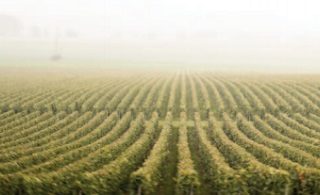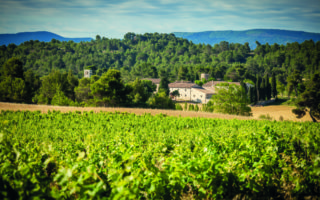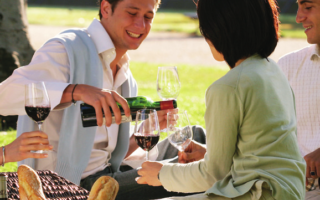Beginner’s Guide to Apéritifs in the Languedoc


Do you know your Pastis from your Kir? If not, read on
The word apéritif derives from the Latin word “apertitiuvum”, which means opener, and is designed to prepare the palate and appetite before a meal. But be aware that the apéritif reflects an entire social custom in the south of France – if you are invited out for apéros it usually means that you should expect to spend an hour or so enjoying a drink and some light snacks (olives, crackers etc) before returning to your own home for dinner.
Here is our quick guide to the most popular apéritifs of the region:

Pastis:
Pastis is an anise flavoured spirit liqueur that contains the additional flavour of liquorice root, and is bottled with sugar. While pastis was probably originally artisanally produced from whole herbs, modern representations are almost certainly prepared by mixing base alcohol with flavourings. Pastis is often associated with absinthe, but the two are in fact very different. Pastis does not contain absinthe instead obtaining its anise flavour from star anise whereas absinthe traditionally obtains its base flavour from distilled green anise. Second, pastis has the distinct flavour of liquorice root, and which is not a part of a traditional absinthe. Third, unlike a traditional absinthe, pastis is a ‘liqueur’, which means it is always bottled with sugar.
Pastis was first commercialized by Paul Ricard in 1932 and enjoys substantial popularity in France, and is associated around the world with archetypal images of the south of France, particularly Provence. It is thought that the Romans has a drink that was similar to pastis, but it wasn’t developed into its current form until the early 20th century where it was introduced as an alternative to absinthe, which had been banned by the French government in 1915 for various health reasons.
Pastis is normally diluted with non-sparkling water before drinking, generally five volumes of water for one volume of pastis, but often pastis is served together with a jug of cold water for the drinker to blend together according to preference. Adding water to the dark transparent yellow liquid makes it go milky. There are also blue and green versions of pastis. And be advised that purists would never consider adding ice to pastis!
Kir:
Kir is a popular cocktail made with a measure of crème de cassis (blackcurrant liqueur) topped up with white wine. Crème de Cassis is a blackberry juice soaked in refined alcohol with sugar added. Its quality is dependant on the quality of its ingredients, but appellation controllé Crème de Cassis from Bourgogne is the best guarantee of quality. Originally the wine used was Bourgogne Aligoté but now it is common to use whatever white wine you fancy. The drink was first known as blanc-cassis, but became known as Kir after Félix Kir (1876 – 1968), mayor of Dijon in Burgundy popularized the drink by offering it at receptions to visiting delegations and consequently promoting two vital economic products of the Burgundy region. Tastes differ with regards to the mix of crème de cassis to white wine, but typically it is about 1/5 crème de cassis.
There are a number of variations to the classic kir, as follows:
Kir Royal – made with Champagne
Kir Pétillant – made with sparkling wine
Communard/ Cardinal – made with red wine instead of white
Kir Imperial – made with raspberry liqueur instead of cassis, and Champagne
Kir Normand – made with Normandy cider instead of wine
Kir Breton – made with Breton cider instead of wine
Cidre Royal – made with cider instead of wine, with a measure of calvados added
Kir Peche – made with peach liqueur
Pamplemousse – made with red grapefruit liqueur and sparkling white wine, which gives a slightly tart alternative
Tarantino – made with lager or light ale
Muscat:
Muscat grapes are used to make a variety of sweet dessert wines in various parts of the world. Typically, these are fortified wines, though some sweet late harvest and noble rot wines are also made from Muscat grapes. France also produces a number of sweet fortified vins doux naturels from muscat grapes which can be served as either an apéritif or dessert wine, in particular the Languedoc-Roussilllon has some excellent varieties of Muscat wines including Muscat de Rivesaltes, Muscat de Frontignan, Muscat de Lunel, Muscat de Mireval, and Muscat de St-Jean Minervois.

Banyuls and Maury:
Both Banyuls and Maury are fortified apéritif or dessert wines made from vines cultivated in terraces on the slopes of the Pyrenees foothills in the Pyrenees-Orientales department of Languedoc-Roussillon.
Banyuls specifically comes from the area defined by the four communes of the Côte Vermeille: Cerbère, Collioure, Port-Vendres and Banyuls-sur-Mer (from it takes its name). Banyuls wines are usually a lovely russet red, although some white wines are produced using grape varieties such as Grenache Noir, Grenache Gris, Grenache Blanc and Carignan, and sometimes also Macabeu, Muscat and Malvoisie. The production process is similar to that used to make Port. Alcohol is added to the must to stop fermentation while sugar levels are still high, preserving the natural sugar of the grape. The wines are then matured for at least 10 months in oak barrels, or outside in glass bottles exposed to the sun, allowing the wine to heat and oxidize. Banyuls Grand Cru is a superior wines that must be matured for 30 months.
Maury specifically comes from the vineyards around the village of the same name and again comes in different varieties according to ageing and grapes used. Almost all Maury wines are red, made from at least 75% Grenache Noir grapes. Other permitted grapes are Grenache Blanc, Grenache Gris, and (rarely used) Macabeu, Malvoisie and Muscat.
Byrrh and Noilly Prat
Both of these world famous aperitifs originate in the Languedoc-Roussillon, and both the cellars of these famous drinks can still be visited today.
Byrrh is still made at the original 19th century cellars in Thuir west of Perpignan. Created by the Violet brothers as a vitalising tonic, the marketing of Byrrh had much more remarkable success once it was rebranded as a wine-based aperitif. Byrrh is made from blending and maturing red wine with ten different spices giving it an utterly unique flavour that is hard to describe. It is best served straight, cold (12 – 14°) but not chilled and without ice, with a little lemon zest or a slice of orange. Adding a dash of blackcurrant liqueur makes Byrrh Blackcurrant and adding soda water and a spot of clear lemon syrup makes Byrrh Lemon. In 1961 CDC who made Dubonnet and Cinzano bought the Byrrh brand. CDC was later merged with Cusenier. The cellars now produce many different aperitifs including Suze, Ambassadeur, Dubonnet and Soho.
Noilly Prat is a dry vermouth that has been produced in Marseillan south of Montpellier for nearly 200 years; it was the first example of a dry vermouth and is among the golden, straw and white vermouths generally known as “French Vermouth”. It was to mimic the natural weathering process that happened when wine was being transported that Joseph Noilly, in 1813, designed a process that made France’s first vermouth. In 1855, his son Louis Noilly and son-in-law Claudius Prat set up the company that became Noilly Prat, moving the business to Marseillan where it remains to this day. From 1865 the company was lead by Anne Rosine Prat, daughter of Claudius. She ran the company for 40 years bringing it the international success it deserved at a time when there were considerably challenges for working women. The brand was acquired by Martini & Rossi in 1971 and is now a part of the Bacardi-Martini family of brands. Noilly’s Red and Ambre versions were introduced in the 1960s and 1980s respectively and are less widely known. Noilly Prat continues to be considered today as the essential ingredient in a dry martini cocktail, with one part Noilly Prat, two parts gin and a dash of orange bitters.
2009
Share to: Facebook Twitter LinkedIn Email
More in burgundy, businesses, champagne, guides, legal, villages, wine
By FrenchEntrée
Leave a reply
Your email address will not be published. Required fields are marked *



